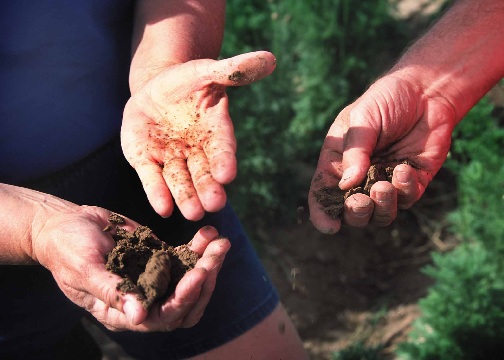|
Organic matter largely determines the quality of a soil for crop production. Typical mineral agricultural soils have organic matter contents of 1-6%. Organic matter consists of three distinctly different parts: living organisms, fresh residues, and well-decomposed residues (i.e., the living, the dead and the very dead organic matter).
Living organic matter is composed of roots, fungi, bacteria, viruses, protozoa, algae, insects, earthworms, and large animals. The living portion represents about 15% of the total soil organic matter. Living organisms play an important role in determining soil quality. Roots stimulate soil aggregation and create pores in the soil. Most other soil organisms live off the 'dead organic matter' and create 'very dead organic matter'. Earthworms completely modify the soil architecture by their burrowing action, and mix soil with organic matter in their intestines which forms stable aggregates upon excretion. Micro-organisms such as fungi contribute to soil structural stability through their hyphae which function as nets around primary soil particles and micro-aggregates. Bacteria produce sticky organic substances that stimulate aggregation. In the process, the living organisms recycle large quantities of nutrients and convert them to forms that are available or unavailable to plants.
Humus is the end product of the decomposition of 'dead organic matter'. Humus is not food for organisms, but it's very small (colloidal) size and chemical properties make it an important soil component. Humus has cation and anion exchange capacity, and thus holds on to some essential plant nutrients, storing them for slow release to plants. Humus can also 'neutralize' certain harmful chemicals, making them unavailable to plants. Humus improves drainage and hence reduces compaction of clay soils, and it improves water retention in sandy soils.
|

